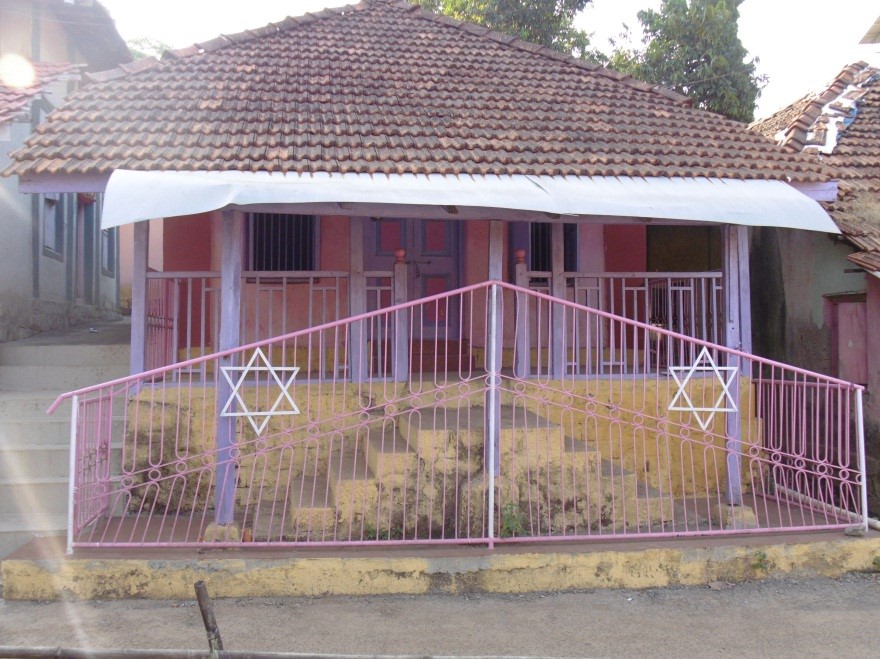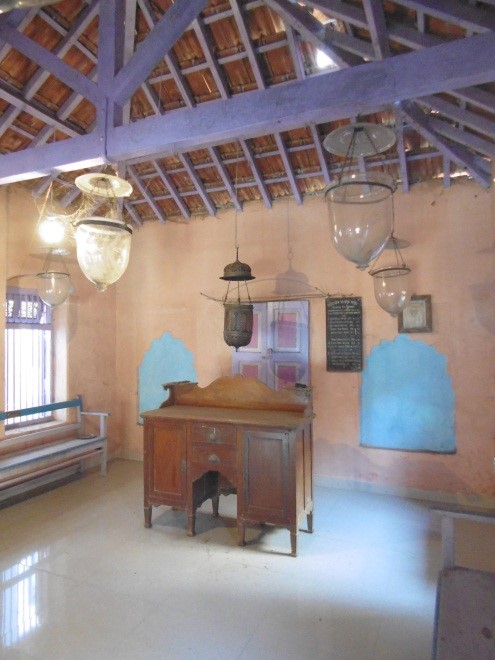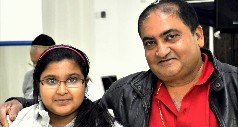HESSED EL SYNAGOGUE (1866)
Located away from the center of town on Chavorpar Alley
Poyand
Raigad District/Konkan Region
Maharashtra, INDIA
This synagogue is closed. Living just nearby is David Moses Navgavker, a young local Jew who runs a business renting horses and carriages for local weddings and other events. As the guardian of the former synagogue, he can provide visitors access to the small yet atmospheric and well-maintained building. There is no contact number or email for this building site. To reach this former synagogue and the nine others throughout the sprawling and picturesque Konkan Region, it is best to hire a car and driver from Mumbai for two full days. There is a convenient ferry that takes passengers from Mumbai’s Gate of India to Alibag in the Konkan Region. Here travelers would have to arrange for private transportation to this and other regional synagogues, which will be challenging since finding someone near the ferry jetty who knows where they are all located is difficult. The alternative is to begin in Mumbai via informed car and driver, and travel all by roads. This is the longer option but will insure that all the synagogues can be reached. For the overnight stay, the comfortable Radisson Hotel on Alibag-Pen Road, Gondhalpada, Varasoli, Alibag, Raigad is suggested.
Hessed El (Hebrew for Mercy or Loyalty to God) Synagogue still stands as one of the thirteen Bene Israel congregations that were organized in the Raigad District within the Konkan Region of coastal Maharashtra during the mid-to-last nineteenth century. Early on, these small congregations conducted prayer services in private homes or temporary spaces. Eventually the Jews built erected proper synagogues, and over time some of these buildings were enlarged or rebuilt for various reasons during the late nineteenth to first quarter of the twentieth century.
Hessed El, no longer a functioning synagogue, is located in the inland village of Poyand just away from its center in an area that was once Jewish. It is one of the smallest and most intimate Bene Israel synagogues of the region. A first synagogue was built in 1866, yet it was rebuilt at an unknown date through membership subscriptions. Some years later, in 1933, the unnamed synagogue was given the name Hessed El. It sits on Chavorpar Alley alongside other small-scaled residential, small commercial, a mosque, and a Hindu temple. When this synagogue was active during the second half of the nineteenth to first half of the twentieth century, the area immediately surrounding the synagogue was a Jewish district.
Hessed El is a modest, low-slung single-story structure constructed of simple brick veneered in rough-textured painted chunam (a polished lime and sand plaster) walls that support a pitched roof framed in wood that is covered in flat clay roof tiles. Today the synagogue’s bright color scheme includes gold-colored walls with corner and intermediate pilasters painted a rust color. The building fascia board is purple, and other areas of the building including its porch handrail, window shutters, and entry doors are painted pink, salmon, and light blue. The synagogue’s modest architecture is very much in keeping of neighboring village buildings in terms of its scale, construction, and building materials. Hessed El’s covered front porch, raised above the street level and contained by painted wooden balusters and a metal gate (not original to the building), runs along the short end of the building that faces the street. Doors at the porch, flanked by a pair of windows without glass yet with bars and paneled shutters, open into the sanctuary.
The small rectangular sanctuary, measuring some 14’ x 17’, follows the planning of other Bene Israel synagogues with its centrally-positioned tebah (bimah, or an area containing a reader’s platform from where the Torah is read) and to the far wall the heckal (ark). The tebah is not a defined raised platform typical to other Bene Israel and other synagogues in India but a small freestanding desk constructed out of wood. Placed in the center of the western elevation that is closest to Jerusalem as per synagogue convention, the heckal is a raised-paneled wooden cabinet that is draped in the traditional cloth called the parochet. Flanking the heckal are two shallow multifoil niches (a nod to local architectural tradition) painted a vivid blue. At one time, set against these niches were two special chairs: one is for the prophet Elijah and the other used for the brit mila, or circumcision ceremony.
Hessed El’s interior features floor pavers (replacements to the original stones tiles), painted chunam walls, wall sconces, Hebrew “Tree of Life” framings, large shutters windows with transoms, and clerestories casement units. Hanging from the Hessed El’s open ceiling with its wooden structure (today painted purple) and underside of the clay roof tiles exposed is a variety of ceiling fans, glass lanterns, and lighting fixtures. Other architectural and liturgical design features include the freestanding wooden benches along the perimeter of the sanctuary and the pair of draped chairs adjacent to the heckal.
According to narratives, the Bene Israel Jews were ancient traders from the Middle East who for many years conducted business in India. Eventually they came to settle – perhaps more than two millennia ago – on a permanent basis primarily in a collection of small towns and villages in the Raigad District within the Konkan Region of coastal Maharashtra. They continued to live there for centuries as a mostly isolated disaporic Jewish enclave, following various Jewish customs and lifestyle practices amongst larger native Indian communities. Centuries later, beginning in late 1700s but especially by the mid-1800s, many of the Bene Israel relocated to Mumbai as well as Ahmedabad, Pune, and Karachi Pakistan when these British colonial cities were expanding and offering job and lifestyle opportunities. Yet not all Bene Israel Jews chose to leave the Konkan Region. For those that remained, the synagogues that had already been built or the ones realized later continued to remain active religious and communal centers for many more decades.
Beginning in the mid-twentieth century, as a result of political and social changes in India, the Bene Israel began to leave India mostly for Israel. At that point, the entire Bene Israel community numbered according to estimates some twenty thousand people. From this pattern of immigration, the Bene Israel population dropped precipitously to a few thousand, and the number of Jews currently living Konkan Region is quite small. Of the thirteen synagogue buildings built in the assortment of towns and villages in this region from the mid-nineteenth to early twentieth centuries, eleven physically survive today. Of those, only a few are active houses of prayers, others endure marginally, and the balance has closed and sit empty or converted to others functions.

Exterior

Interior








